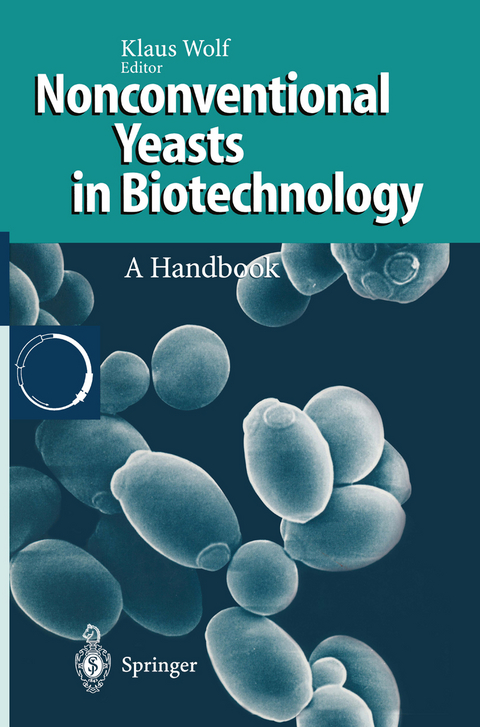
Nonconventional Yeasts in Biotechnology
Springer Berlin (Verlag)
978-3-642-79858-0 (ISBN)
This book is the first to extensively cover nonconventional yeasts. In addition to useful background information detailed protocols are included, allowing investigation of basic and applied aspects of a wide range of nonconventional yeast species.
Recently, considerable interest has been shown in harnessing different nonconventional yeasts in a diverse range of applications in biotechnology. They are especially valuable in the production of foods, drugs and a variety of biochemicals. Also in basic research these yeasts help to understand biological processes. This is the first book outlining the use of these organisms.
1 Principles and Methods Used in Yeast Classification, and an Overview of Currently Accepted Yeast Genera.- 1 Introduction.- 2 Some Principles of Yeast Taxonomy.- 3 Trends in the Systematics of Yeasts.- 4 Phylogeny.- 5 Methods.- 6 Overview of Yeast Genera.- 7 Appendix.- References.- 2 Protoplast Fusion of Yeasts.- 1 Introduction.- 2 Transfer of Cytoplasmic Genes.- 3 Production of Polyploid Strains.- 4 Fusion of Strains with Identical Mating Type.- 5 Establishment of Parasexual Genetic Systems.- 6 Fusion of Strains Belonging to Different Species or Genera.- 7 Practical Recommendations.- 8 Analysis of the Fusants.- 9 Additional Protocols.- 10 Concluding Remarks.- References.- 3 Electrophoretic Karyotyping of Yeasts.- 1 Introduction and Theory.- 2 Fields of Application.- 3 Practical Recommendations.- References.- 4 Schwanniomyces occidentalis.- 1 History of Schwanniomyces occidentalis Research.- 2 Physiology.- 3 Media.- 4 Available Strains.- 5 Genetic Techniques.- 6 Chromosomal DNA.- 7 Genes and Genetic Markers.- 8 Vector Systems.- 9 Heterologous Gene Expression.- 10 The Amylolytic System.- 11 Industrial Applications.- References.- 5 Kluyveromyces lactis.- 1 History of Kluyveromyces lactis Research.- 2 Physiology.- 3 Growth Media.- 4 Available Strains.- 5 Genetic Techniques.- 6 Chromosomal DNA.- 7 Genes and Genetic Markers.- 8 K. lactis Genes vs. S. cerevisiae Genes.- 9 Regulation of Carbon Metabolism.- 10 Mitochondria.- 11 A Few Notes on Biochemical Procedures.- 12 Plasmids.- 13 Vector Systems.- 14 Transformation Procedures.- 15 K. lactis for Industrial Application.- References.- 6 Pichia pastoris.- 1 History of Pichia pastoris.- 2 Growth and Storage.- 3 Available Strains.- 4 Genetic Techniques.- 5 Fermentation Process.- 6 Transformation.- 7 Induction of Protein Expression.- 8 Analysis of Protein Expression.- 9 Vectors.- 10 Optimization of Protein Expression.- 11 Miscellaneous Procedures.- References.- 7 Pichia guilliermondii.- 1 History of Pichia guilliermondii Research.- 2 Physiology.- 3 Available Strains.- 4 Genetic Techniques.- 5 Chromosomes, Genes, and Genetic Markers.- 6 DNA Isolation and Transformation.- 7 Biochemical Genetics.- 8 Biotechnological Applications.- 9 Concluding Remarks.- References.- 8 Pichia methanolica (Pichia pinus MH4).- 1 History of Pichia methanolica Research.- 2 Physiology.- 3 Available Strains.- 4 Genetic Techniques.- 5 Chromosomes.- 6 Genes and Genetic Markers.- 7 Transformation.- 8 Genetic Control of Mating.- 9 Biochemical Genetics of Purine Biosynthesis.- 10 Genetic Control of Methanol Metabolism.- 11 Biotechnological Applications.- References.- 9 Hansenula polymorpha (Pichia angusta).- 1 History of Hansenula polymorpha Research.- 2 Physiology.- 3 Media.- 4 Available Strains.- 5 Genetic Techniques.- 6 Chromosomes.- 7 Genes and Genetic Markers.- 8 Vector Systems.- 9 Heterologous Gene Expression.- 10 Peroxisomal Biogenesis.- 11 Applied Aspects.- 12 Concluding Remarks.- References.- 10 Yarrowia lipolytica.- 1 History of Yarrowia lipolytica Research.- 2 Physiology/Biochemistry/Cell Structure.- 3 Life Cycle.- 4 Genetic and Molecular Data.- 5 Transformation, Vectors, and Expression Systems.- 6 Media and Culture Conditions.- 7 Genetic Techniques.- 8 Methods of Cell Biology (Structural Studies).- 9 Methods of Molecular Biology/Gene Technology.- References.- 11 Arxula adeninivorans.- 1 History of Arxula adeninivorans Research.- 2 Physiology and Biochemical Procedures.- 3 Growth Media.- 4 Available Strains and Preservation Methods.- 5 Parasexual Genetics.- 6 Chromosomal DNA.- 7 Mitochondrial DNA.- 8 TransformationSystem.- 9 Expression of Heterologous Genes in A. adeninivorans.- References.- 12 Candida maltosa.- 1 History and Taxonomy of Candida maltosa.- 2 Physiology and Biochemistry of Candida maltosa.- 3 Cytology and Morphology of Candida maltosa.- 4 Genetics and Molecular Biology of Candida maltosa.- 5 Host-Vector Systems for Candida maltosa.- 6 Potential Biotechnological Application of Candida maltosa.- References.- 13 Trichosporon.- 1 History of Trichosporon Research.- 2 Available Strains and Mutant Collections.- 3 Media for Different Purposes.- 4 Conservation of Strains.- 5 Genetic Techniques.- 6 Biochemical Techniques.- 7 Molecular Techniques.- 8 Specific Biochemical Properties of Trichosporon Yeasts.- 9 Trichosporon Cell Biology: Staining of Nuclei.- 10 Applications of Trichosporon Yeasts.- References.
| Erscheint lt. Verlag | 11.1.2012 |
|---|---|
| Zusatzinfo | XXII, 619 p. |
| Verlagsort | Berlin |
| Sprache | englisch |
| Maße | 155 x 235 mm |
| Gewicht | 959 g |
| Themenwelt | Naturwissenschaften ► Biologie ► Genetik / Molekularbiologie |
| Naturwissenschaften ► Biologie ► Mikrobiologie / Immunologie | |
| Naturwissenschaften ► Biologie ► Zellbiologie | |
| Technik ► Umwelttechnik / Biotechnologie | |
| Schlagworte | Biotechnologie • Biotechnology • Hefe • karyotyping • Protoplast • Protoplasts • yeast |
| ISBN-10 | 3-642-79858-6 / 3642798586 |
| ISBN-13 | 978-3-642-79858-0 / 9783642798580 |
| Zustand | Neuware |
| Haben Sie eine Frage zum Produkt? |
aus dem Bereich


